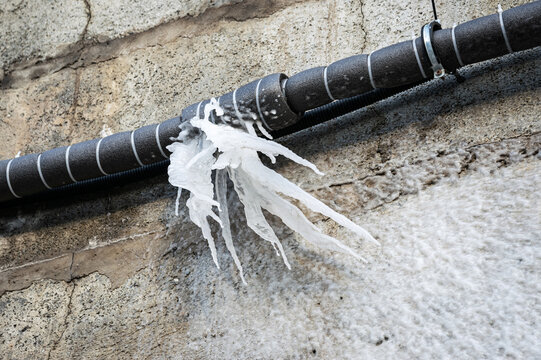How to Prevent Frozen Plumbing in Winter: Pro Advice
How to Prevent Frozen Plumbing in Winter: Pro Advice
Blog Article
This great article down below relating to Prevent Frozen Pipes is totally engaging. You should read it.

Winter can damage your pipes, specifically by freezing pipes. Here's just how to avoid it from occurring and what to do if it does.
Introduction
As temperature levels decline, the danger of frozen pipes rises, potentially causing costly repair work and water damages. Recognizing how to prevent icy pipes is essential for property owners in cool environments.
Recognizing Frozen Pipelines
What triggers pipes to ice up?
Pipelines freeze when subjected to temperature levels below 32 ° F (0 ° C) for extended durations. As water inside the pipelines freezes, it increases, taxing the pipeline wall surfaces and possibly triggering them to rupture.
Risks and problems
Icy pipes can lead to water disruptions, building damage, and pricey repair services. Ruptured pipelines can flooding homes and trigger considerable structural damage.
Indicators of Frozen Pipeline
Recognizing frozen pipes early can stop them from bursting.
How to recognize icy pipes
Search for reduced water flow from faucets, uncommon smells or sounds from pipes, and noticeable frost on subjected pipelines.
Avoidance Tips
Insulating at risk pipes
Cover pipes in insulation sleeves or make use of warm tape to protect them from freezing temperature levels. Concentrate on pipes in unheated or exterior locations of the home.
Home heating techniques
Maintain indoor rooms appropriately heated, particularly locations with plumbing. Open cupboard doors to permit warm air to flow around pipes under sinks.
Securing Outdoor Plumbing
Yard hoses and outdoor faucets
Disconnect and drain garden tubes before winter season. Install frost-proof spigots or cover exterior faucets with insulated caps.
What to Do If Your Pipes Freeze
Immediate actions to take
If you suspect frozen pipelines, maintain faucets available to alleviate stress as the ice melts. Use a hairdryer or towels soaked in hot water to thaw pipelines slowly.
Long-Term Solutions
Structural modifications
Take into consideration rerouting pipes away from exterior walls or unheated areas. Include additional insulation to attics, cellars, and crawl spaces.
Updating insulation
Invest in high-quality insulation for pipelines, attic rooms, and wall surfaces. Proper insulation helps maintain constant temperature levels and lowers the danger of frozen pipelines.
Verdict
Preventing icy pipelines requires proactive procedures and quick actions. By recognizing the reasons, signs, and preventive measures, homeowners can shield their plumbing during winter.
5 Ways to Prevent Frozen Pipes
Drain Outdoor Faucets and Disconnect Hoses
First, close the shut-off valve that controls the flow of water in the pipe to your outdoor faucet. Then, head outside to disconnect and drain your hose and open the outdoor faucet to allow the water to completely drain out of the line. Turn off the faucet when done. Finally, head back to the shut-off valve and drain the remaining water inside the pipe into a bucket or container. Additionally, if you have a home irrigation system, you should consider hiring an expert to clear the system of water each year.
Insulate Pipes
One of the best and most cost-effective methods for preventing frozen water pipes is to wrap your pipes with insulation. This is especially important for areas in your home that aren’t exposed to heat, such as an attic. We suggest using foam sleeves, which can typically be found at your local hardware store.
Keep Heat Running at 65
Your pipes are located inside your walls, and the temperature there is much colder than the rest of the house. To prevent your pipes from freezing, The Insurance Information Institute suggests that you keep your home heated to at least 65 degrees, even when traveling. You may want to invest in smart devices that can keep an eye on the temperature in your home while you’re away.
Leave Water Dripping
Moving water — even a small trickle — can prevent ice from forming inside your pipes. When freezing temps are imminent, start a drip of water from all faucets that serve exposed pipes. Leaving a few faucets running will also help relieve pressure inside the pipes and help prevent a rupture if the water inside freezes.
Open Cupboard Doors
Warm your kitchen and bathroom pipes by opening cupboards and vanities. You should also leave your interior doors ajar to help warm air circulate evenly throughout your home.

I'm very serious about How To Avoid Freezing Pipes and I really hope you liked the entire blog post. Loved our blog entry? Please share it. Let others check it out. Thanks for taking the time to read it.
Schedule Service Pickup Report this page